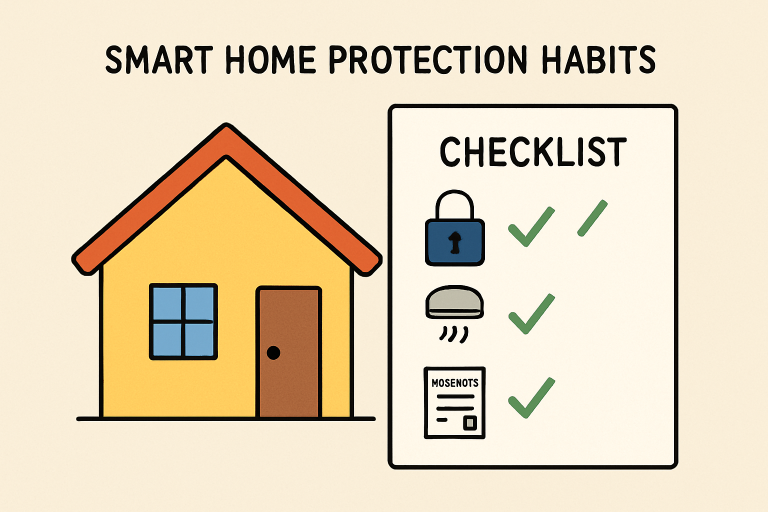Key Takeaways
- Home insurance offers vital protection but is often misunderstood or underused.
- Taking proactive steps can reduce risks, lower premiums, and provide peace of mind.
- Regular home assessments and awareness of coverage gaps make a difference.
- Recent trends and data show why more homeowners are rethinking their policies.
Table of Contents
- What Home Insurance Covers (And What It Doesn’t)
- Common Misconceptions Homeowners Have
- Ways To Reduce Risks At Home
- Steps To Improve Your Home Insurance Policy
- Understanding Deductibles And Premiums
- Emerging Risks And Climate Changes
- Making Claims Less Stressful
- Final Thoughts On Protecting Your Space
What Home Insurance Covers (And What It Doesn’t)
For many homeowners, home insurance often feels like just another box to check off each year. However, a good policy proves invaluable when unexpected events like fires, theft, or water damage strike. Standard home insurance typically covers common hazards such as windstorms, fire, and vandalism, but there are limits to this safety net. Damages from floods, earthquakes, or neglectful maintenance often require additional policies or exclusions. Before disaster strikes, review your policy terms closely and speak with your insurer about specific risks.
Many major providers offer programs and discounts for proactive homeowners. Exploring AAA home insurance discounts is wise for those looking to maximize their savings. These discounts reward proactive safety habits and help make robust coverage more affordable. Beyond lowering premiums, they also encourage long-term protection by motivating homeowners to invest in preventative measures. Simple steps like upgrading security systems or maintaining a safe property environment can translate into meaningful financial benefits. Taking advantage of these opportunities ensures homeowners save money and gain greater peace of mind.
Common Misconceptions Homeowners Have
It’s a widespread misconception that home insurance covers every possible loss at full replacement value. In reality, most policies set specific limits for possessions, and “actual cash value” often replaces new-for-old—meaning depreciation is factored in. Another common oversight is assuming water and flood damage are included by default; this coverage is frequently an add-on. Surveys reveal that nearly half of U.S. homeowners incorrectly believe they’re fully protected against floods, exposing themselves to significant financial risk.
Understanding these limits is essential. As property values and personal possessions fluctuate over time, reviewing and updating your policy is critical to prevent coverage gaps. Regular policy checks can reveal outdated estimates or new liability needs, ensuring you’re not left underinsured after a loss.

Ways To Reduce Risks At Home
- Install smoke and carbon monoxide detectors on every home floor, checking batteries regularly.
- Clear gutters, drains, and roofs to prevent water buildup and possible leaks.
- Trim overhanging tree branches and remove yard debris to minimize storm risks.
- Upgrade doors and windows with reinforced locks, intelligent systems, or security cameras.
- Maintain safe walkways and fix uneven steps to lower the risk of accidents or liability claims.
Many insurers acknowledge these efforts and offer premium discounts or additional benefits as incentives. By implementing a few simple maintenance habits, you not only protect your home but may also access valuable savings.
Steps To Improve Your Home Insurance Policy
- Update your home inventory using photos and digital lists to reflect your possessions accurately.
- Notify your insurance provider after home renovations, upgrades, or changes that may impact your property value.
- Evaluate your liability limits, especially if you install features like a swimming pool or trampoline, or host frequent gatherings.
- Check your policy for “loss of use” coverage, which can fund temporary living expenses if you relocate after a disaster.
Proactivity is key. Schedule regular policy reviews—at least once per year or after significant life changes—to ensure your coverage evolves with your needs. These steps will prepare you and help you avoid unpleasant surprises in times of need.
Understanding Deductibles And Premiums
Deductibles and premiums play a critical role in determining your policy’s cost and out-of-pocket expenses after an incident. Opting for a higher deductible can lower your monthly premium but increases your financial responsibility when filing a claim. Conversely, a lower deductible costs more each month but reduces your burden when calamity strikes. It’s crucial to assess your financial comfort level and choose the balance that best supports your family’s budget and risk tolerance.
For a broader perspective on how deductibles and premiums affect your policy choices, consult reputable consumer resources like Consumer Reports’ guide to homeowners insurance.
Emerging Risks And Climate Changes
With climate change intensifying, the landscape of home insurance is evolving. Wildfires, severe storms, and floods are increasing in frequency and severity. As a result, more insurance companies are reassessing risk and redefining what’s covered—and at what price. Homeowners in affected regions must pay close attention to new exclusions or requirements, such as mandatory mitigation steps or flood zone designations.
A recent New York Times feature explored how these changes are prompting many to add supplemental policies or reevaluate their coverage. Staying informed about these trends enables you to adjust your policy and remain protected against new threats.
Making Claims Less Stressful
When a disaster occurs, the claims process can feel daunting. Organization is your best ally: Keep an up-to-date digital inventory of possessions, along with receipts and warranties for major items. Respond quickly to requests from your insurer and document all communication with adjusters. Running through periodic “dry runs” of a claim—including gathering needed documentation—will help you spot gaps and simplify the process should the unexpected happen.
Final Thoughts On Protecting Your Space
Protecting your home means more than simply renewing your policy each year. Smart habits—like reviewing your home insurance, updating security features, and staying alert to emerging risks—can make a lasting difference. Embrace proactive steps now, and you’ll ensure that your home, family, and peace of mind are safeguarded for the years to come.
READ ALSO: What Every First-Time Homebuyer Should Know: Tips for a Smoother Journey



















